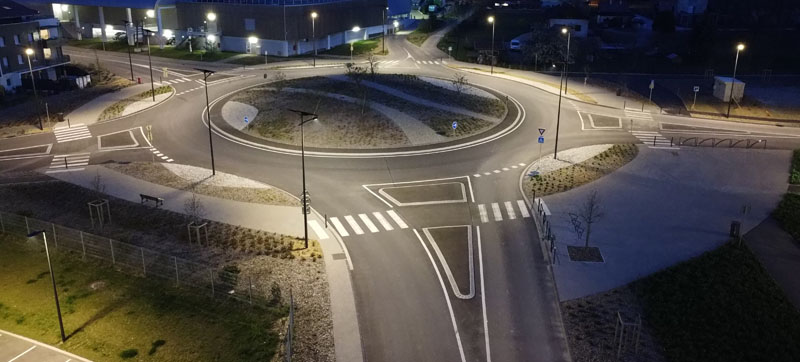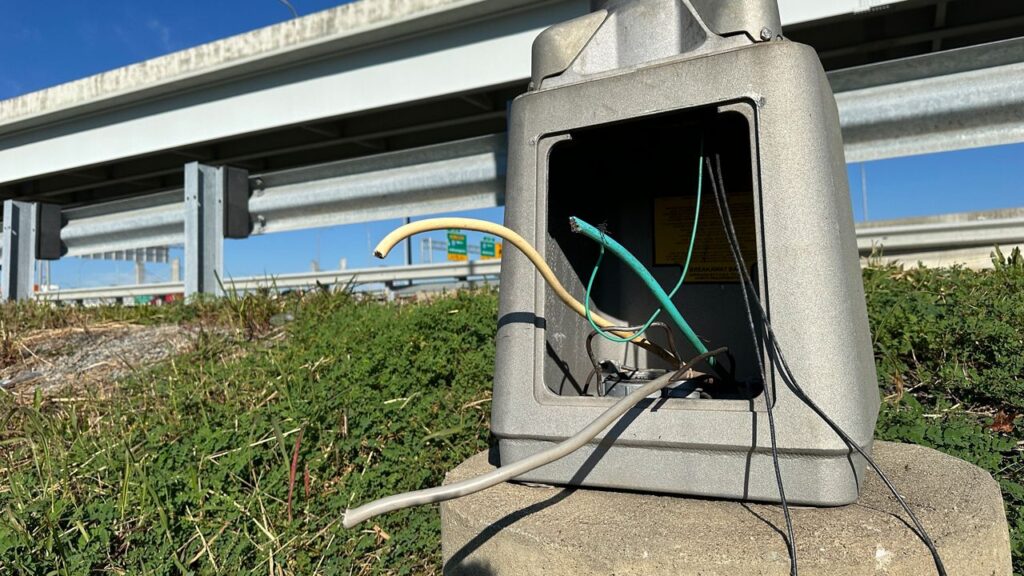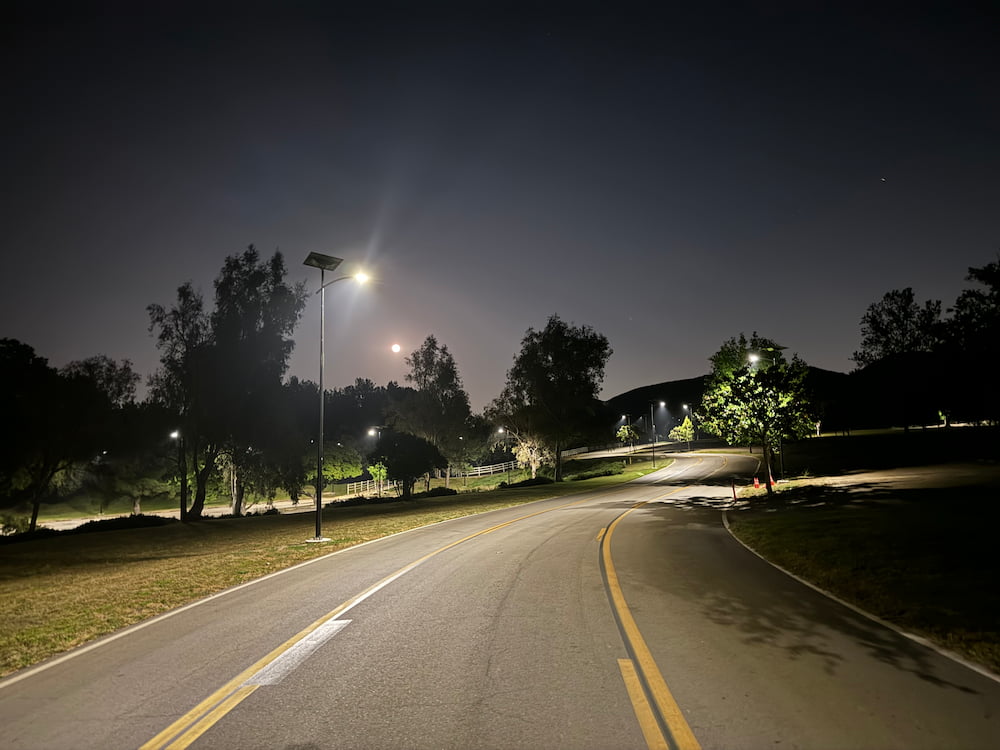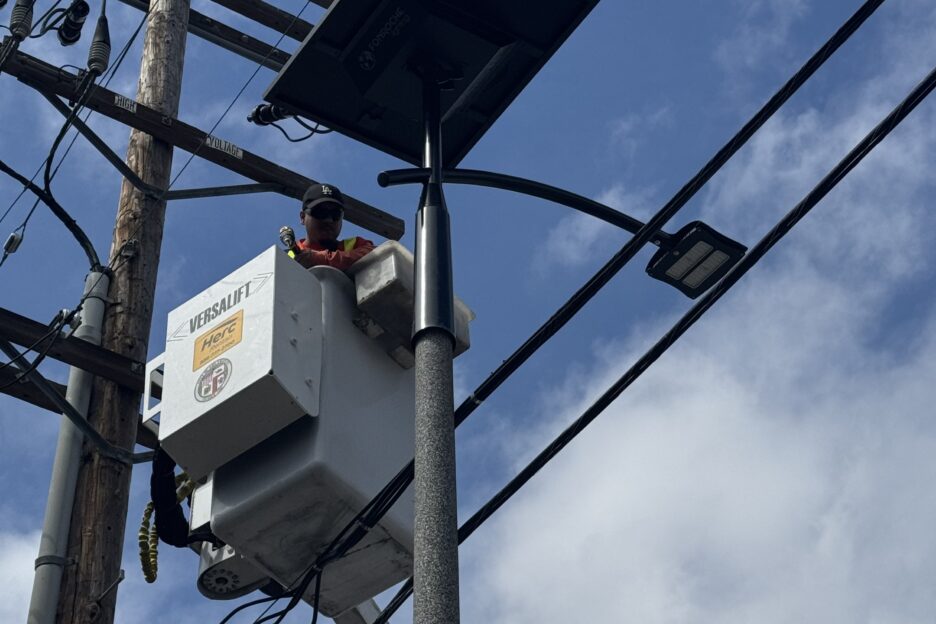How to Ensure Reliable Public Lighting When Utility Maintenance Fails
Streetlights are a critical component of urban infrastructure, ensuring public safety, enhancing walkability, and supporting local businesses. However, many municipalities are struggling with unresponsive utility providers, leaving streetlights in disrepair for weeks or months at a time.
When utility-serviced streetlights fail, the risks go far beyond inconvenience—darkened streets increase crime rates, disrupt daily activity, and create liability issues for cities and property owners.
If your community is experiencing delayed or nonexistent streetlight maintenance, there are proactive steps you can take to regain control over public lighting. This guide explores why utilities fail to service streetlights, how municipalities can respond, and why alternative lighting solutions—such as solar streetlights—are becoming the preferred choice for long-term reliability.
Why Functional Streetlights Matter
Public Safety & Crime Prevention
Studies consistently show that poor lighting contributes to higher crime rates, especially in urban areas. A 2019 study by the University of Chicago Crime Lab found that improved street lighting reduced nighttime crime by 36% in some neighborhoods. When streetlights go unmaintained, entire communities become more vulnerable to theft, assaults, and traffic-related incidents.
Dark streets are particularly dangerous in:
- Residential neighborhoods, where poor lighting increases the risk of break-ins and personal attacks.
- Commercial districts, where businesses suffer from reduced evening foot traffic due to safety concerns.
- School zones and parks, where families and pedestrians feel unsafe in unlit areas.
- Major intersections and crosswalks, where visibility issues lead to preventable accidents.
Without properly serviced streetlights, cities not only put their residents at risk but also expose themselves to legal liability. If an accident or crime occurs in a known underlit area, municipalities may be held responsible for failing to maintain safe public spaces.

Traffic Safety & Accident Prevention
The Federal Highway Administration (FHWA) reports that nighttime fatal crashes are nearly three times higher than those that occur during daylight hours. Poor street lighting significantly reduces driver reaction times and increases the likelihood of pedestrian and cyclist collisions.
When streetlights remain nonfunctional for extended periods, municipalities face:
- Higher accident rates, leading to increased emergency response costs.
- More insurance claims and legal disputes from injured pedestrians and motorists.
- Negative public perception, as residents grow frustrated with prolonged outages.
Maintaining proper illumination of roadways, intersections, and pedestrian crossings is a basic public safety obligation that cities cannot afford to overlook.
Economic & Community Impact
Unmaintained streetlights can harm local economies by reducing consumer activity and overall walkability. Well-lit streets encourage people to visit local businesses, attend evening events, and feel comfortable navigating their neighborhoods after dark.
Cities that fail to address streetlight outages may experience:
- Reduced business revenue, especially for restaurants, bars, and shops dependent on evening customers.
- Declining property values, as poor lighting contributes to urban decay and disinvestment.
- Loss of community engagement, with fewer people using public parks, walking trails, and downtown areas.
For municipalities aiming to attract investment, tourism, and economic growth, properly maintained streetlights are an essential piece of infrastructure.
Why Aren’t Utilities Servicing Your Streetlights?
If utility-provided streetlight maintenance has become unreliable, it’s essential to understand why these delays are happening. While issues vary between cities and utility companies, the most common causes include:
1. Maintenance Backlogs & Resource Limitations
Many utility providers prioritize large-scale electrical grid maintenance over streetlight servicing, leading to extended repair times. Some companies operate with limited staff, leaving municipalities waiting weeks or months for a response.
2. Budget Cuts & Shifting Priorities
Some utilities have reduced funding for streetlight maintenance, leading to:
- Longer response times due to fewer technicians.
- Deferred maintenance, where aging infrastructure is neglected until full replacement is necessary.
- Limited availability of replacement parts, particularly for outdated lighting systems.

3. Copper Wire Theft & Vandalism
Streetlights connected to the electrical grid are frequent targets for copper thieves. When wiring is stolen, utilities often delay repairs due to the high cost of replacements. In some cases, entire neighborhoods are left without lighting for months because utilities consider the area too high-risk for immediate repairs.
4. Contractual Limitations & Ownership Confusion
Some municipalities assume that utilities own and maintain streetlights, when in reality, responsibility is shared or falls entirely on the city. Contractual agreements can complicate repair timelines, especially if third-party service providers are involved.
If your streetlights remain out for extended periods, your city may need to reevaluate its agreement with the utility provider or seek alternative solutions.
Steps to Take When Your Utility Provider Isn’t Servicing Streetlights
If your community is facing chronic streetlight maintenance issues, here’s what you can do:
Immediate Actions
- Report & Escalate the Issue
- Contact the utility provider and file an official maintenance request.
- Document all communications and track response times.
- If necessary, escalate the issue to municipal leaders or file a public complaint.
- Implement Temporary Safety Measures
- Notify law enforcement to increase patrols in underlit areas.
- Set up temporary lighting solutions, such as portable solar-powered floodlights.
- Alert residents and businesses to use caution and report further outages.
Long-Term Solutions
- Consider a Streetlight Buyback Program
- Some cities purchase streetlights from utility providers, gaining full control over maintenance schedules and technology upgrades.
- Transition to Solar Streetlights
- Self-sustaining, solar-powered streetlights eliminate dependence on utility providers.
- No wiring means no risk of copper theft, reducing maintenance costs.
- Solar streetlights operate during grid failures, ensuring reliable lighting in all conditions.
Take Control of Your Street Lighting Today
If your utility provider isn’t servicing your streetlights, it’s time to find a permanent solution. Solar-powered streetlights from Fonroche Lighting America offer a cost-effective, long-term alternative that eliminates dependency on utilities altogether.

✔ No power grid needed – Fully independent, solar-powered operation.
✔ No copper theft – Eliminates expensive repair costs.
✔ Minimal maintenance – 10-12 year battery life, 20-25 year LED lifespan.
✔ Fast installation – No trenching, no cabling, 40% lower installation costs.
✔ Reliable lighting, no outages – Stays on even during blackouts and extreme weather.

